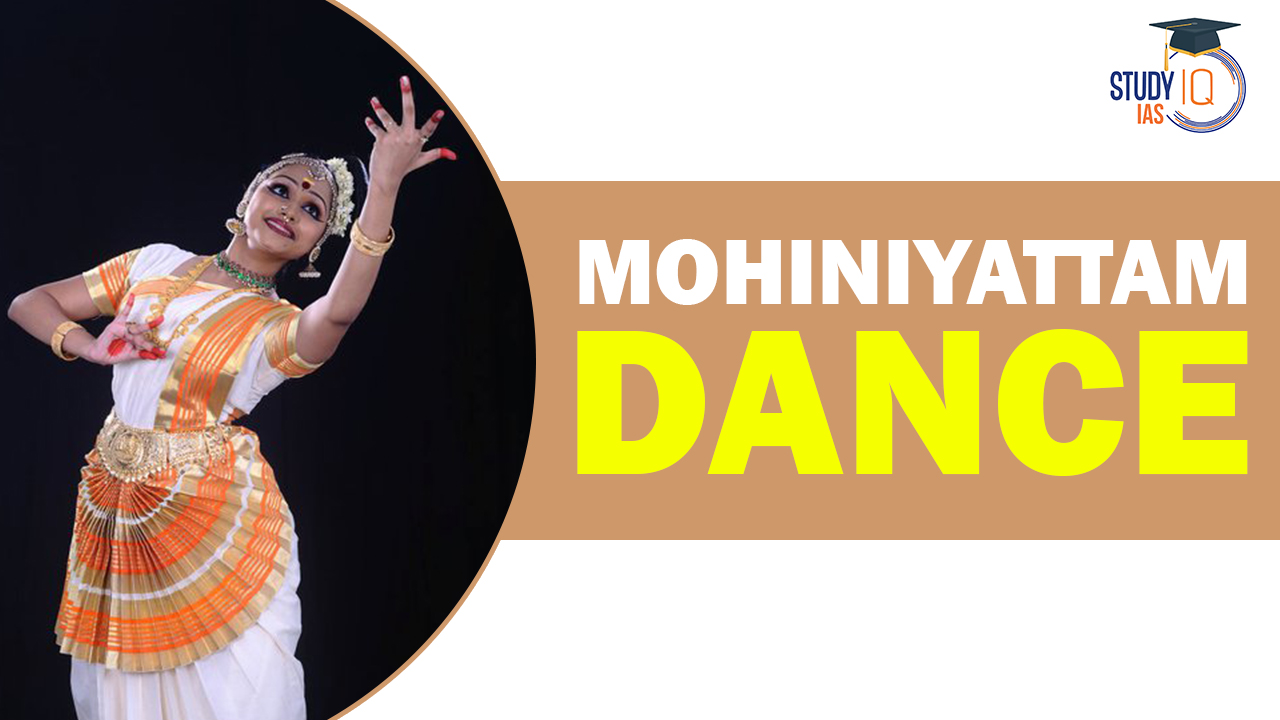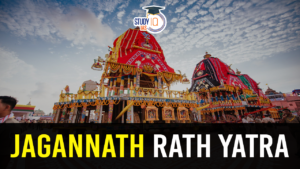Table of Contents
Mohiniyattam is a classical dance form that originated in the southern Indian state of Kerala. It is one of the eight major Indian classical dance forms and is known for its graceful and feminine movements. The name “Mohiniyattam” is derived from the words “Mohini,” meaning a female avatar of the Hindu god Vishnu, and “attam,” meaning dance.
We’re now on WhatsApp. Click to Join
Mohiniyattam Dance: Indian Classical Dance
Mohiniyattam, an Indian classical dance form that originated in Kerala, holds a significant place alongside Kathakali as one of the state’s prominent dance arts. Rooted in the ancient Sanskrit text ‘Natya Shastra,’ Mohiniyattam falls into the Lasya category, emphasizing grace, gentleness, and a feminine expression of dance. The name Mohiniyattam is derived from “Mohini,” representing the female manifestation of Lord Vishnu.
Traditionally a solo performance by female artists, Mohiniyattam combines dance and singing to convey a narrative. The songs are typically in Manipravala, a blend of Sanskrit and Malayalam, and the recitation can be executed by the dancer or a vocalist. The musical accompaniment follows the Carnatic style. This dance form beautifully weaves together movement, expression, and storytelling, showcasing the artistry and cultural richness of Kerala.
Mohiniyattam Dance Origin and Evolution
Roots in Natya Shastra
- Mohiniyattam finds its theoretical foundation in the ancient Sanskrit Hindu text, ‘Natya Shastra,’ attributed to sage Bharata Muni.
- ‘Natya Shastra’ classifies dance into two types: ‘nritta’ (pure dance) emphasizing hand movements, and ‘nritya’ showcasing expressive aspects.
Origin and Sculptural Evidences in Kerala
- Mohiniyattam originated in Kerala, influenced by the Lasya style of dancing.
- Temple sculptures in Kerala, such as those in the 11th-century Vishnu temple at Trikodithanam and Kidangur Subramanya temple, showcase early manifestations of Mohiniyattam poses.
Historical Mentions:
- The term “Mohiniyattam” appears in texts like ‘Vyavaharamala’ (16th century) and ‘Gosha Yatra’ (17th century) by scholars Mazhamangalam Narayanan Namboodiri and Kunchan Nambiar, respectively.
- ‘Balarama Bharatam’ (18th century) by King Karthika Thirunal Bala Rama Varma references “Mohino Natana” among various dance styles.
Patronage and Systematization
- In the 18th and 19th centuries, Mohiniyattam received patronage from princely states, notably from Maharaja Swathi Thirunal Rama Varma of Travancore.
- Swathi Thirunal’s contributions led to the development and systematization of Mohiniyattam as a distinct classical dance form.
Colonial Decline
- During British colonial rule in the 19th century, classical dance forms, including Mohiniyattam, faced contemptuous treatment and witnessed a decline.
- Social and economic challenges, along with disdain from missionaries, contributed to the decline of Mohiniyattam.
Revival Efforts
- Vallathol Narayana Menon, a key figure in the revival of classical arts, played a crucial role in rescinding the ban on temple dancing in Kerala.
- In 1930, Menon established ‘Kerala Kalamandalam,’ a dance school that played a pivotal role in the revival and reconstruction of Mohiniyattam.
Post-Independence Revival
- Post-Independence, efforts to revive national culture and traditions contributed to the resurgence of Mohiniyattam.
- Kalamandalam and other institutions played a significant role in inspiring artists to learn and practice Mohiniyattam.
Mohiniyattam Dance Repertoire
- Follows ‘Nritta’ and ‘Nritya’ categories from ‘Natya Shastra.’
- Embraces the Lasya type of dance, showcasing grace, gentleness, and femininity.
- Excellence in ‘Ekaharya Abhinaya,’ a solo expressive dance form.
Nritta
- Technical performance emphasizing pure dance movements.
- Focus on speed, form, pattern, range, and rhythmic aspects.
Nritya
- Communicates stories and spiritual themes through expressive gestures and slower body movements.
- Engages the audience with emotional and thematic elements.
Natyam
- Group performance communicating a play through dance-acting.
- Part of Mohiniyattam’s repertoire sequence.
Mohiniyattam Dance Costumes
- Plain white or off-white sari with golden or gold-laced brocade embroidery.
- Matching choli or blouse.
- Pleated cloth with concentric golden or saffron-colored bands.
- Golden waist belt and various jewelry pieces.
- Musical anklets (ghungroo) for rhythmic footwork.
- Red-colored natural dyes highlight feet and fingers.
- Light makeup with a Hindu tikka, vividly colored lips, and prominently lined eyes.
- Hair styled in a tight round chignon adorned with flowers, typically jasmine.
Mohiniyattam Dance Instruments & Music
- Vocal music with diverse rhythms, often in Manipravala (Sanskrit and Malayalam mix).
- Carnatic style musical accompaniment.
- Instruments: Kuzhitalam (cymbals), Veena, Idakka (hourglass-shaped drum), Mridangam (barrel-shaped drum), flute.
Mohiniyattam Dance Famous Exponents
- 20th-century figures: Kalamandalam Kalyanikutty Amma, Thankamony, Krishna Panicker, Mukundraja.
- Present-day exponents: Sunanda Nair, Smitha Rajan, Radha Dutta, Vijayalakshmi, Gopika Varma, Jayaprabha Menon, among others.
Mohiniyattam Dance UPSC
Mohiniyattam, a classical dance from Kerala, evolved from ‘Natya Shastra,’ emphasizing grace and femininity. Originating in Kerala, it faced colonial decline but was revived by Vallathol Narayana Menon, particularly through ‘Kerala Kalamandalam.’ The repertoire includes ‘Nritta’ (pure dance) and ‘Nritya’ (expressive storytelling). Costumes feature white saris, golden embroidery, and traditional jewellery.
Musical accompaniment, rooted in the Carnatic style, involves instruments like cymbals and flutes. Renowned exponents include Kalamandalam Kalyanikutty Amma and present-day artists like Sunanda Nair. This dance form, with roots in ancient texts and sculptures, reflects Kerala’s cultural richness, epitomizing a harmonious blend of movement, expression, and storytelling.
| Other Classical Dances of India | |
| Bharatanatyam Dance | Kathak Dance |
| Kuchipudi Dance | Manipuri Dance |
| Kathakali Dance | Mohiniyattam Dance |
| Sattriya Dance | Odissi Dance |


 Sheesh Mahal in Delhi Restoration, Archi...
Sheesh Mahal in Delhi Restoration, Archi...
 Bonalu Festival 2025: Date, History, Rit...
Bonalu Festival 2025: Date, History, Rit...
 Puri Jagannath Rath Yatra 2025, History,...
Puri Jagannath Rath Yatra 2025, History,...





















